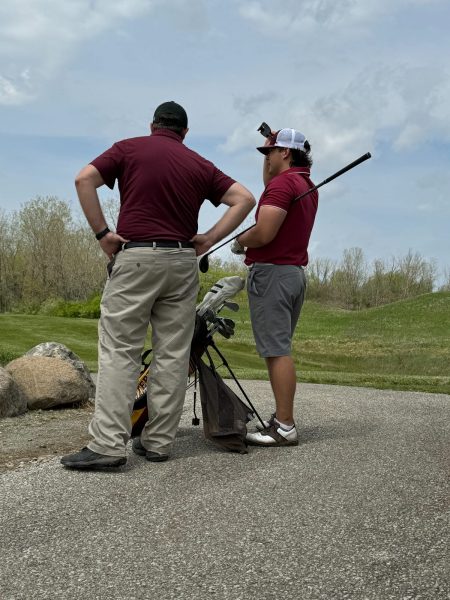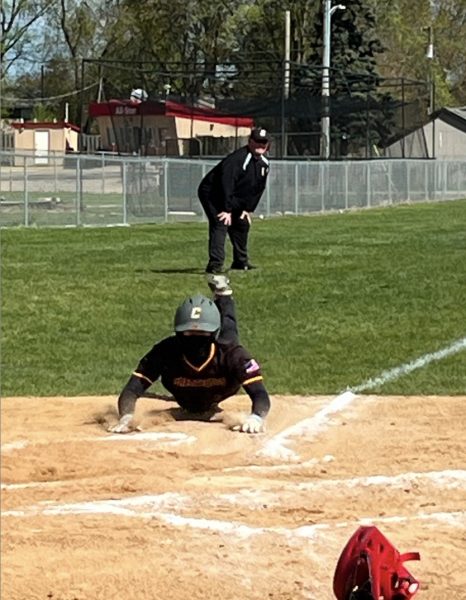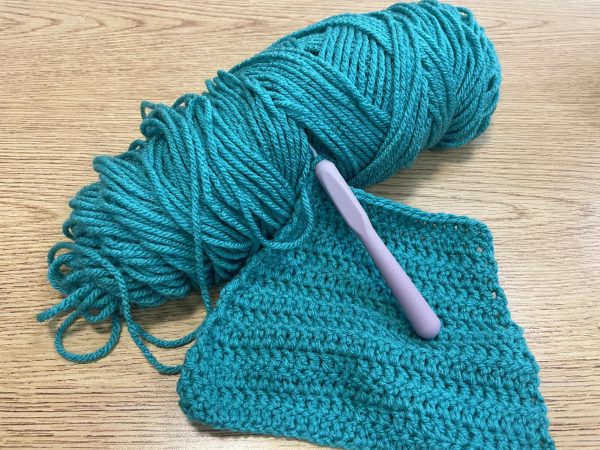Are Injuries Worth the Glory?
Parents Weight in on Injuries in Youth Sports
November 30, 2021
Sports are a dangerous hobby, but many endure in playing sports. Many parents feel the need to put their child in a sport. But are the parents addressing the risk their child faces by playing sports? Is there enough research to explain what could happen? Do we look over the fine print? There are so many questions that might not be answered. Are sports safe?
Why do parents put their children in sports? They put their child in sports for them to get rid of energy, keep them active, and help them find themselves. They believe that sports are of extreme value to their children, whether it is taking up time after school, or just keeping their child healthy. Regardless of the amount of children in sports, there are some children who are not in sports. Some children would prefer to read or study instead of shooting basketballs, or hitting a ball. There is the stereotypical ideology that all kids should play sports. Parents should be able to put their child in what they feel fit, not just sports, it can be book clubs or scouts. But the parents who expand their children’s abilities through different sports are incredibly important. Some parents want their child to be a professional athlete, and the amount of pressure that puts on a child leads to devastating injuries and burn out in the sport they are supposed to love.
When speaking to Mrs. Tracie Gentry, she and her husband placed her two girls in these sports at a young age, “We (her and her husband) decided to sign them up for sports because we thought they needed physical activity and it teaches them teamwork. They have ultimately played softball, gymnastics, track, cross country, basketball, wrestling, volleyball, and golf”.
On the contrary, Mrs. Jennifer Jendrzejczyk, let her children decide what they wanted to do when they were under five years old. “We did not sign up our kids for sports before five years of age because they had no interest in doing any. If they were interested we would only let them if they were safe”. Her son, who is now seven, is playing flag football however due to their concerns in the safety of tackle football, Dom is still not playing pop warner football.
Sports come with a warning label regardless of which sport, even the sports without balls, come with a danger. All sports come with a type of danger, for the sake of this article we are taking a look at three different sports and their risks. Football is one of the most obvious, as there have been many injuries that are life threatening, but scientists and doctors are working diligently to find a helmet that helps target and reject the potential energy. Cheerleading is another sport that where many injuries occur, because let’s face it, throwing people in the air and flipping is not the safest practice. However, those in the sport can take safety precautions to potentially prevent injury. Regardless of how much you do to prevent an injury, that does not mean it won’t occur. Concussions and broken bones are common in cheerleading. Swimming has the possibility of drowning regardless of how good you swim.
“I just want to protect my little people” Jendrejczyk added. This is something that is important to her and all other parents out there, watching out for their children is the one thing that they care about most.
Gentry agreed, “Some sports are more dangerous, contact sports can get a little scary, however with our safety precautions put in place I feel like our youth is safe.”
The most common reason for injury is a child is playing one sport and they have an overuse injury. Typically these stem from lack of diversity in athletes’ training. When a child plays one sport, it requires the same training repetitively, so nothing changes in their muscle movements because they need specific skills to help them while they play. Therefore, these single sport athletes don’t experience the diversity of muscle movements and skill trainings that dual and tri sport athletes partake in. When a child is training, they commonly train as if they are a professional athlete, but in reality their bodies are not able to endure the usage rates while still growing. Children and parents have begun training as if they are committing to a division one school at two years old. “I wish that we weren’t all competing for D1 scholarships in elementary school,” Jendrejczyk concluded.
Students’ sports careers are not determined by what they do when they’re younger but rather determined by working hard, and knowing their bodies’ limitations. If you want a scholarship, it is not a matter of how long you have been playing, but how good you are. One thing coaches look at are the attitude and personality that they will be working with. If you are not going to work for the team, the sport you are envisioning will not occur the way you want. . Let your kids have fun and be kids while they can be, because one day, it will matter and they have to make a decision of whether or not they want to play.







